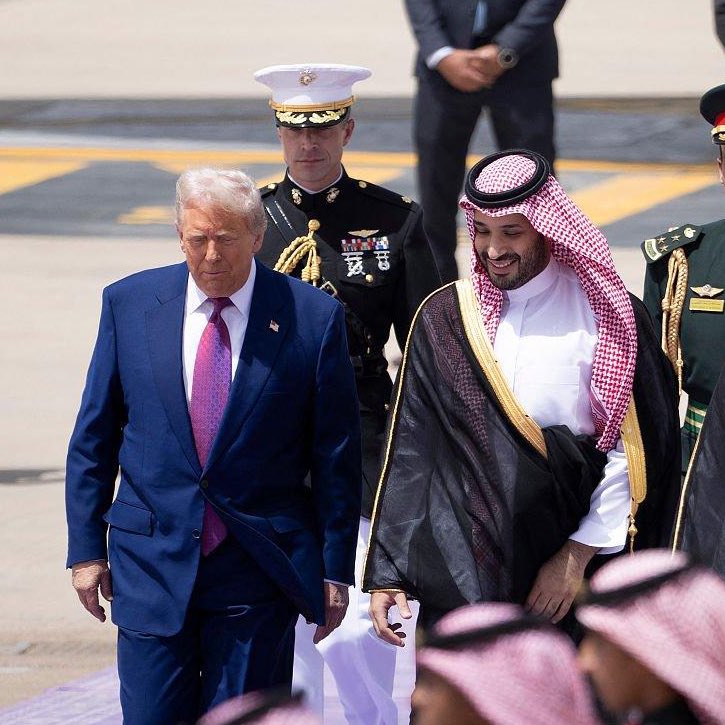- President Donald Trump has embarked on a high-profile four-day tour of the Middle East, visiting Saudi Arabia, Qatar, and the United Arab Emirates from May 13 to May 16, 2025. This trip marks his first state visit since resuming office earlier this year and his second international journey overall. The visit is primarily focused on securing massive economic deals, while also addressing pressing regional security issues, including Iran’s nuclear program and the ongoing conflict in Gaza.
Economic Focus and Investment Deals
A key feature of Trump’s Gulf tour is the pursuit of substantial economic agreements. Saudi Arabia, Qatar, and the UAE-three energy-rich Gulf states-are expected to announce investments potentially totaling trillions of dollars into the United States. Saudi Arabia alone had pledged $600 billion in investments earlier this year, and Trump aims to push this figure closer to $1 trillion over the next four years.
The tour includes the Saudi-U.S. Investment Forum in Riyadh, where Trump will be accompanied by a delegation of prominent American business leaders and CEOs, including Tesla’s Elon Musk, BlackRock’s Larry Fink, and Citigroup’s Jane Fraser. This blend of political and business figures underlines the administration’s strategy to intertwine diplomacy with economic interests.
Additionally, Trump is expected to propose a major arms deal with Saudi Arabia valued at over $100 billion, potentially including advanced military equipment such as C-130 transport aircraft. This deal would reinforce longstanding U.S.-Saudi defense ties amid regional tensions.
Regional Security and Diplomatic Challenges
While economic matters dominate the agenda, the visit cannot be disentangled from the complex security environment of the Middle East. The region faces escalating crises: Israel’s intensified military campaign in Gaza following the breakdown of a ceasefire, and Iran’s advancing nuclear program, which has raised fears of a potential arms race.
Trump’s administration has been actively involved in diplomatic efforts, including recent U.S.-Iran negotiations in Oman aimed at limiting Tehran’s nuclear ambitions. The president has warned of military action if diplomacy fails but has chosen to keep these issues somewhat peripheral during the Gulf tour, focusing instead on economic diplomacy.
The Gulf states hosting Trump share interests in stabilizing the region and reducing tensions related to Gaza and Iran. However, talks on sensitive geopolitical topics such as Saudi-Israel normalization are reportedly being sidestepped during this visit, despite Trump’s earlier ambitions to expand the Abraham Accords that normalized relations between Israel and several Arab countries.
Strategic and Symbolic Aspects
Saudi Arabia was also the first foreign destination Trump visited during his initial presidency, breaking with tradition by not starting in neighboring countries like Canada or Mexico. His return to Riyadh symbolizes a continuation of strong U.S.-Gulf ties and highlights the importance of the Gulf as a strategic and economic partner.
Trump’s visit also occurs against the backdrop of a recent downturn in U.S. economic output, making the pursuit of foreign investments a critical component of his domestic economic agenda. The president has indicated he may rename the Persian Gulf to the Arabian Gulf or Gulf of Arabia during this trip, reflecting regional sensitivities and his administration’s diplomatic posture.
Conclusion
President Trump’s Middle East tour is a calculated blend of business and diplomacy. By leveraging economic opportunities in Saudi Arabia, Qatar, and the UAE, he aims to secure unprecedented investment flows into the U.S. economy while maintaining a strategic presence in a volatile region. Although security challenges such as the Gaza conflict and Iran’s nuclear program loom large, the trip’s primary emphasis remains on deepening economic ties and reinforcing alliances with key Gulf partners. This approach reflects Trump’s characteristic focus on deal-making and economic leverage as tools of foreign policy.

